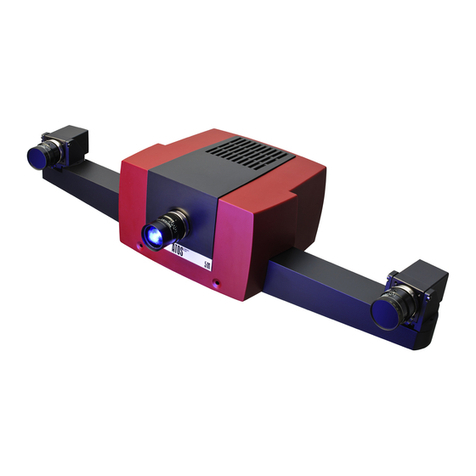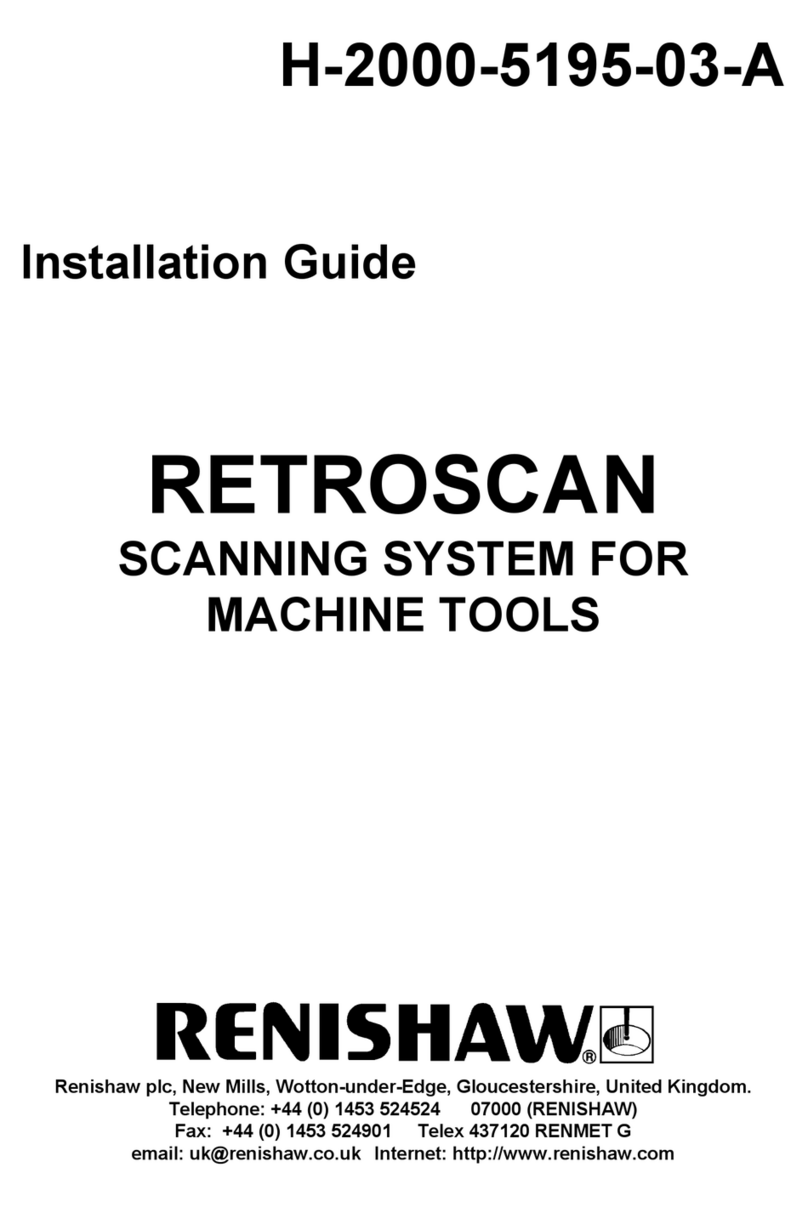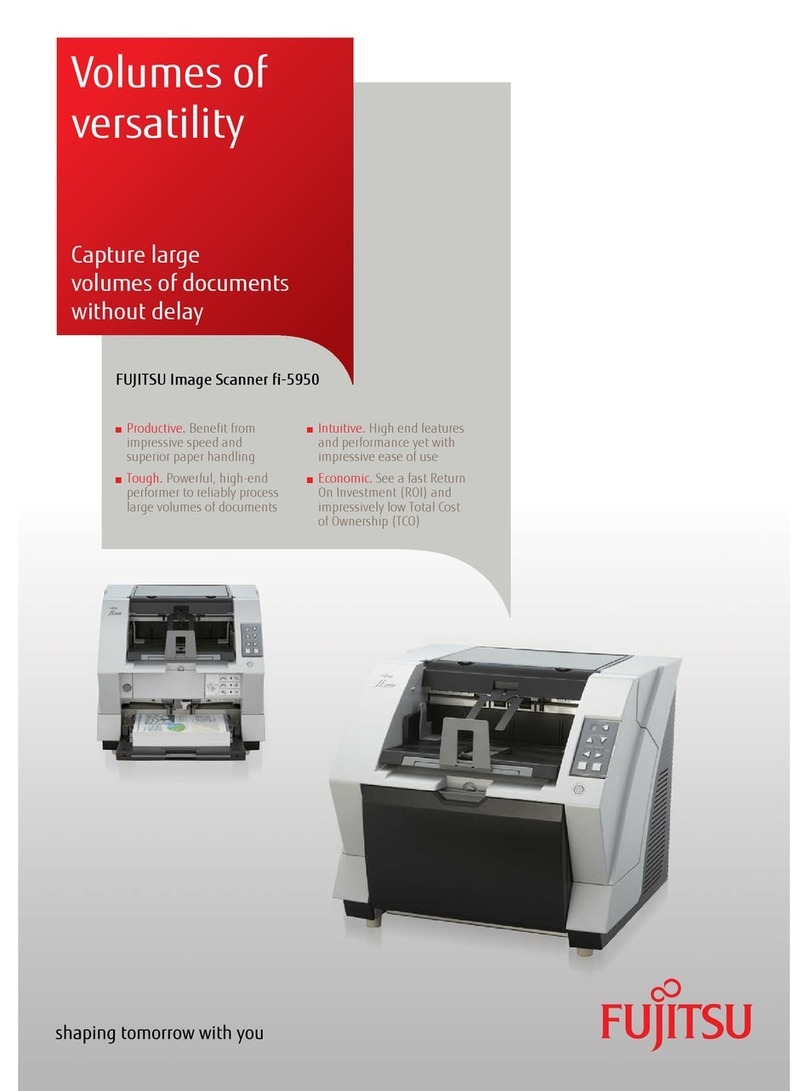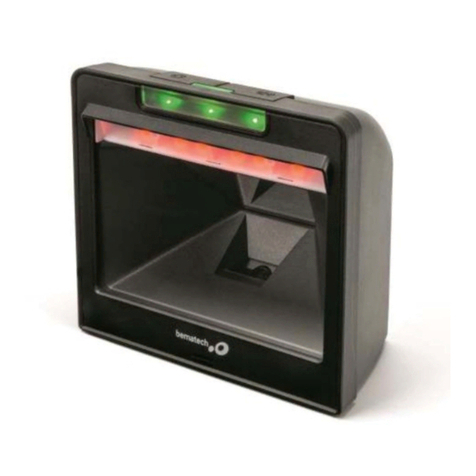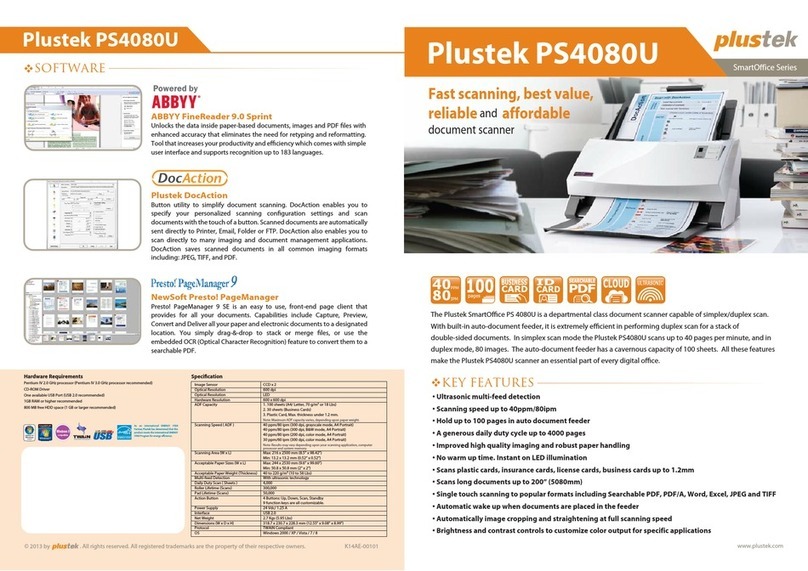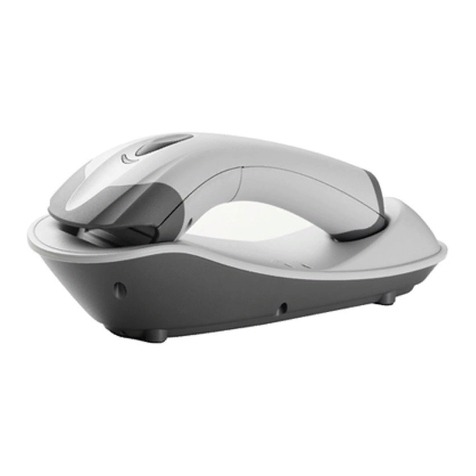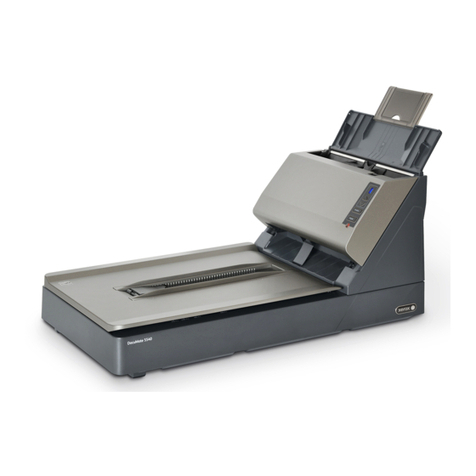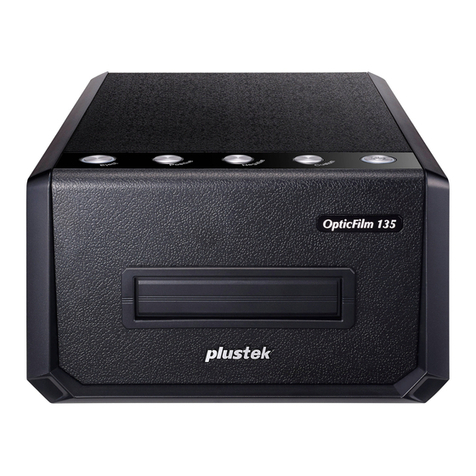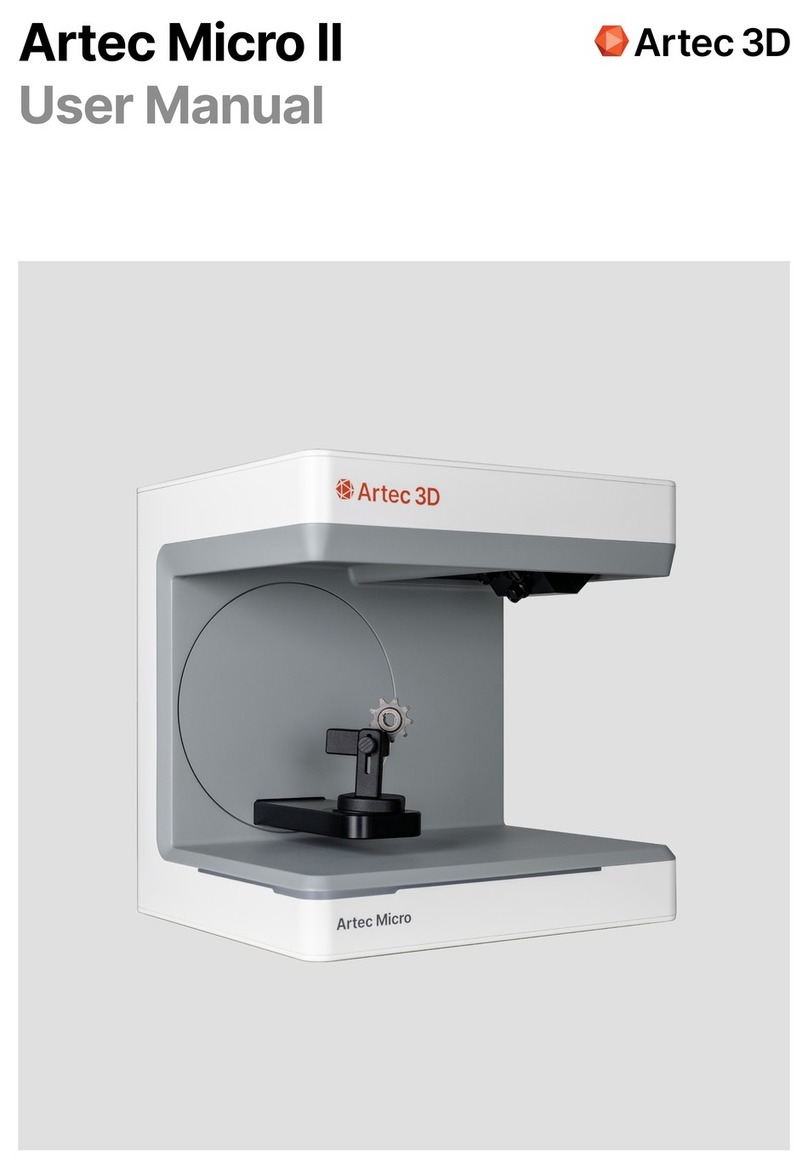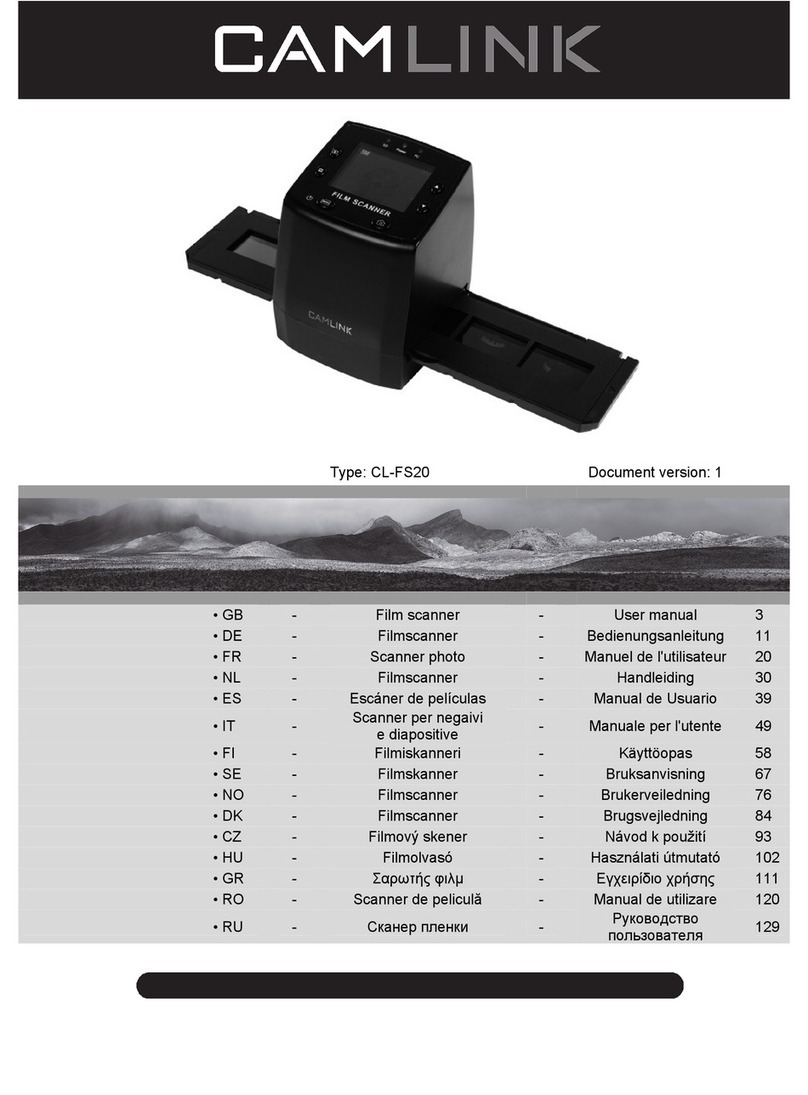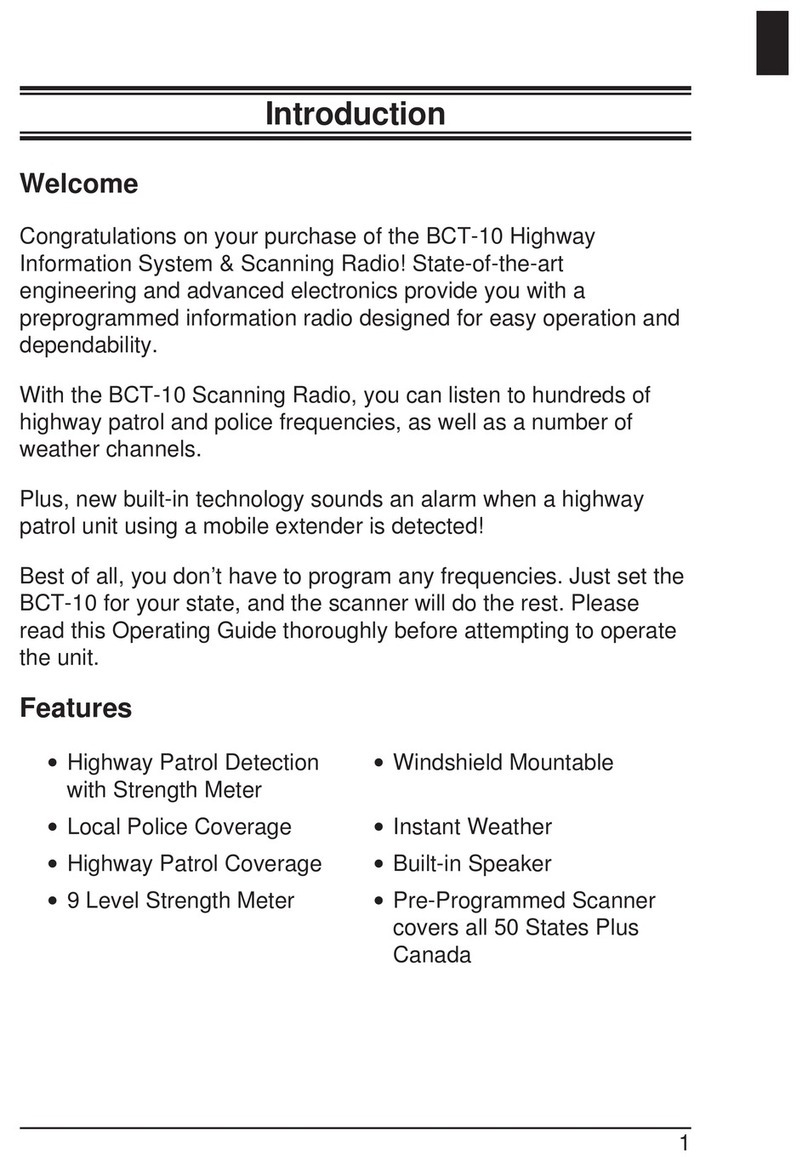GOM ATOS II Triple Scan User manual

GOM mbH
Mittelweg 7-8
D-38106 Braunschweig E-Mail: info@gom.com
Germany www.gom.com
Tel.: +49 (0) 531 390 29 0 Fax: +49 (0) 531 390 29 15
atos2-3_rev02_so-400-800-v7-5-0_en_rev-b 2012-01-03
ATOS
User Manual - Hardware
ATOS II and III Triple Scan
With 400 mm and 800 mm Camera Support

Important Notes
Page 2 (44)
atos2-3_rev02_so-400-800-v7-5-0_en_rev-b 2012-01-03
Important Notes
Symbols
In this user manual the following standard signal words may be
used:
This label points to a situation that might be
dangerous and could lead to serious bodily
harm or to death.
This label points to a situation that might be
dangerous and could lead to light bodily harm.
This label points to a situation in which the
product or an object in the vicinity of the product
might be damaged.
This label indicates important application notes
and other useful information.
Safety and Health Hazard Notes
•
The used laser meets laser class 1 according to DIN EN 60
825-1 (optical output power < 0.39 mW, wavelength 650
nm).
•Do not use equipment connected to AC power during heavy
thunderstorms. Due to voltage variations and transient vol-
tages in the low-voltage network, malfunctions and danger-
ous voltages between housing and other components may
occur.
•In extreme positions, stands with horizontal extension arms
may fall over. Avoid such positions. Use the product only on
a safe and steady ground.
•When measuring large objects, make sure you comply with
the respective valid accident prevention regulations.
•Operate the equipment only with the operating voltages
printed on the housing. Using an incorrect operating voltage
may cause malfunctions or the risk of fire.
•
Artificial optical radiation (projector light). When operating,
do not look into the light source for a longer time. Directly
looking into the light source may be harmful for your eyes!
(See also 2.1.1 Technical Data).
•Check cables and, if damaged, replace them by all means.
Protect the cables from mechanical load (squeezing, ten-
sion, etc.). Damaged cables may cause short-circuits and
the risk of fire.
•AC power connection of the unit must comply with the valid
regulations of the respective countries.
•Replace fuses only with components having the same spe-
cifications.
•Never unplug or connect cables during operation!
•The devices must not come into contact with water. For
cleaning, use a moist cloth but first disconnect the power
plug.
•The ambient temperature must be between +5 and +40 °C.
Make sure no rapid temperature variations occur that might
cause condensation.
•The housing may only be opened when no voltage is ap-
plied.
•Do not stick any strange objects into the housing.
•Never cover the venting slots.
•Never operate the sensor without the corresponding air fil-
ter, see section 10.
Legal Notes
No part of this publication may be reproduced in any form or by
any means or used to make any derivative work (such as
translations, transformations or adaptations) without the prior
written permission of GOM.
GOM reserves the right to revise this publication and to make
changes in content from time to time without obligation on the
part of GOM to provide notification of such revision or change.
GOM provides this manual without warranty of any kind, either
implied or expressed, including, but not limited, to the implied
warranties of merchantability and fitness for a particular pur-
pose.
GOM may improve or change the manual and/or the product(s)
described herein at any time.
Copyright © 2011
GOM mbH
All rights reserved!

Table of Contents
Page 3 (44)
atos2-3_rev02_so-400-800-v7-5-0_en_rev-b 2012-01-03
Table of Contents
Important Notes __________________________________ 2
Symbols _________________________________________ 2
Safety and Health Hazard Notes ______________________ 2
Legal Notes ______________________________________ 2
Table of Contents_________________________________ 3
1. Introduction _______________________________ 5
2. System Types______________________________ 5
2.1 Overview of the ATOS Triple Scan System Types __ 5
2.1.1 Technical Data ___________________________________ 6
2.2 Hardware and Software Components of Measuring
System____________________________________ 6
3. Information About the Sensor ________________ 7
3.1 Sensor Configurations ________________________ 8
3.1.1 Camera Positions and Camera Eccentric Stops _________ 9
3.2 Definition of Terms__________________________ 10
4. Lenses___________________________________ 11
4.1 Lens Types _______________________________ 11
Lenses for Camera Positions 400 and 800 ___________________11
Lenses for Camera Position SO ___________________________11
5. Control Elements and LED Indicators _________ 12
5.1 Web Interface______________________________ 13
6. Operation of Pan and Tilt Head (Option) _______ 14
6.1 Positioning of Sensor________________________ 14
6.2 Locking Mechanism of Sensor Fixture___________ 15
6.2.1 Mounting Direction of Sensor on Locking Mechanism ____ 15
7. Sensor Setup _____________________________ 16
7.1 General __________________________________ 16
7.2 Measuring Volume__________________________ 16
7.3 Changing the Camera Positions (Step by Step) ___ 16
7.3.1 ATOS Triple Scan Sensor With Cameras in Position 400 _ 17
7.3.2 Remove Camera Cover ___________________________ 17
7.3.3 Remove Air Filter ________________________________ 17
7.3.4Remove Camera Lenses __________________________ 18
7.3.5 Mount Dust Covers_______________________________ 18
7.3.6 Loosen Projector Lens With Tool ____________________ 18
7.3.7 Unscrew Projector Lens Manually ___________________ 19
7.3.8 Remove Housing Screws __________________________ 19
7.3.9 Remove Upper Part of Housing _____________________ 19
7.3.10 Remove Cameras and Fixing Screws ________________ 20
7.3.11 Insert Cameras in Position SO ______________________ 20
7.3.12 Fix Cameras in Position SO ________________________ 20
7.3.13 Rotate Cameras Against Eccentric Stop and Fix Them___ 21
7.3.14 Mount Upper Part of Housing_______________________ 21
7.3.15 Screw on the Upper Part of the Housing ______________ 22
7.3.16 Screw in Projector Lens Manually ___________________ 22
7.3.17 Hand-Tight Projector Lens with Tool _________________ 22
7.3.18 Remove Dust Covers _____________________________ 23
7.3.19 Screw in Lenses Hand-Tight _______________________ 23
7.3.20 Mount Camera Covers ____________________________ 23
7.3.21 Insert Air Filter __________________________________ 24
7.3.22 ATOS Triple Scan Sensor With Cameras in Position SO _ 24
7.4 Set Up Sensor with ATOS V7 Software__________ 25
7.4.1 Camera Angle___________________________________ 26
7.4.2 Adjust the Laser Pointers __________________________ 27
Steps to adjust the laser pointers __________________________27
8. Wireless Remote Control ____________________ 28
8.1 Preparing the Remote Control__________________28
8.2 Explanation of the Function Keys _______________29
9. Sensor Calibration _________________________30
9.1 How to Handle Calibration Objects ______________30
9.2 Calibration Conditions ________________________31
9.2.1 When is Calibration Required? ______________________ 31
9.2.2 Prerequisites ____________________________________ 31
9.3 Calibration Using Calibration Panel CP 40 ________ 32
9.3.1 Handling Instructions for Calibration Panel CP40________ 33
9.3.2 Loading the Calibration Data _______________________ 34
9.3.3 Preparing the Calibration Process ___________________ 34
9.3.4 Calibration Process_______________________________ 35
9.3.5 Calibration Result ________________________________ 36
9.4 Calibration Using Calibration Cross CC 30 ________37
9.4.1 Handling Instructions for Calibration Cross CC 30 _______ 37
9.4.2 Entering Calibration Data into ATOS _________________ 38
9.4.3 Preparing the Calibration Process ___________________ 38
9.4.4 Calibration Process_______________________________ 39
9.4.5 Calibration Result ________________________________ 39
9.4.6 Quick Calibration_________________________________ 40
10. Checking and Cleaning the Air Filter __________ 41
11. Cabling ___________________________________42
11.1 Cabling with 19" PC _________________________42
11.2 Cabling with Laptop__________________________43

Table of Contents
Page 4 (44)
atos2-3_rev02_so-400-800-v7-5-0_en_rev-b 2012-01-03

Introduction
Overview of the ATOS Triple Scan System Types
Page 5 (44)
atos2-3_rev02_so-400-800-v7-5-0_en_rev-b 2012-01-03
1. Introduction
This user information is intended for qualified personnel who is not or
just a little familiar with the coordinate measurement technique but
who has basic PC knowledge (windows-based programs and operat-
ing systems).
This user information is configured to the transfer of knowledge of sys-
tem installation, sensor settings, changing the camera support and
other hardware relevant information.
For being able to make optimum use of the system, we assume the
ability to visualize in 3D and a color vision ability.
This user information is divided into the following sections:
•The first page informs about important safety aspects.
•Section 1 - Introduction
•Section 2 describes the system variants.
•Section 3 contains general information about the sensor.
•Section 4 informs about how to handle the lenses.
•Section 5 describes the control elements and LED indicators of the
sensor.
•Section 6 describes the control elements of the optional 3D pan and
tilt head.
•Section 7 describes the setup of the sensor.
•Section 8 explains the wireless remote control.
•Section 9 describes the calibration of the sensor.
•Section 10 informs about cleaning the air filter.
•Section 11 contains the cabling of the system as laptop and 19" PC
variants.
2. System Types
This user manual describes four types of the ATOS Triple Scan sen-
sors. Mainly, the sensors are constructed similarly and differ in the
cameras and in the length of the camera support.
2.1 Overview of the ATOS Triple Scan System Types
Type:
ATOS II Rev. 02
ATOS III Rev. 02
ATOS II Rev. 02 800
ATOS III Rev. 02 800
Camera resolution:
2448 x 2050 pixels
3296 x 2472 pixels
2448 x 2050 pixels
3296 x 2472 pixels
Length of the camera support:
approx. 400 mm
approx. 800 mm
Difference in size:
Possible camera positions:
SO, 400
SO, 400, 800
Application software:
ATOS Professional V7.2-0 and higher
for Windows
ATOS Professional V7.2-5 and higher
for Windows

Hardware and Software Components of Measuring
System System Types
Page 6 (44)
atos2-3_rev02_so-400-800-v7-5-0_en_rev-b 2012-01-03
2.1.1 Technical Data
System
ATOS II Rev. 02
ATOS II Rev. 02 800
ATOS III Rev. 02
ATOS III Rev. 02 800
Measuring volumes for
camera position 800
560 x 420 x 420 mm to 2000 x 1500 x 1500 mm
(only for ATOS II Rev. 02 800 and ATOS III Rev. 02 800)
Measuring volumes for
camera position 400 170 x 130 x 130 mm to 1400 x 1050 x 1050 mm
Measuring volumes for
camera position SO
38 x 29 x 15 mm to 320 x 240 x 240 mm
Measuring points per individu-
al scan
or camera resolution
approx. 5 000 000
(2448 x 2050 pixels)
approx. 8 100 000
(3296 x 2472 pixels)
Measuring point dis-
tance
800
0.23 to 0.79 mm
0.2 to 0.61 mm
400
0.07 to 0.62 mm
0.05 to 0.45 mm
SO
14.70 - 123.93 µm
11.58 - 95.46 µm
Transfer of image and control
signals
via Gigabit data link with max. 2 Ethernet interfaces
Projector light
Artificial optical radiation
blue, 400-500 nm
(Medium risk according to DIN EN 62471, issue March 2009,
when looking into the light source)
Ambient conditions
+5 °C to +40 °C
(non-condensing)
Voltage range (typical)
90 - 240 V, 50 - 60 Hz
Power consumption
Typically 130 W
max. 300 W
Power Factor Correction
≥ 95%
Max. cable length between
sensor and PC, laptop
30 m
For further information see http://www.gom.com
2.2 Hardware and Software Components of Measuring System
•ATOS sensor with stereo cameras, fringe projector, controller and
power supply.
•Stand for secure and steady hold of the ATOS sensor.
•Please only use stands which are released by GOM
for this sensor type. Otherwise the stand with the sensor may fall
over!
•High-performance PC system with Microsoft Windows operating
system and separate network interface card for the Gigabit data
link.
•The factory settings of the separate network inter-
face card (interfaces Cam L, Cam R) are optimized for the Gigabit
data link and must not be changed! Never enable the firewall for
this network interface card.
•ATOS application software (Windows) as of version V7 see 2.1
Overview of the ATOS Triple Scan System Types.

Information About the Sensor
Page 7 (44)
atos2-3_rev02_so-400-800-v7-5-0_en_rev-b 2012-01-03
3. Information About the Sensor
Each configured ATOS sensor, in scan direction, has defined 3D areas
within which a measuring object can be scanned. In the following,
such a 3D area is called "measuring volume" (MV).
The measuring volume determines the distance between sensor and
measuring object and the set of lenses to be used.
In practice, depending on the measuring task, different measuring
volumes might be required.
Ideally, you have camera and projector lenses that are preadjusted to
your measuring volume. In this case, you need to perform no or just
very few steps for adjusting the sensor.
A complete sensor setup is only required if the corresponding set of
lenses has never been adjusted before or is decalibrated (wrong ad-
justments).
For a complete sensor adjustment, you need to adjust the angle rela-
tions of the cameras and set the focus and aperture of the lenses.
Then, the complete system is calibrated by means of calibration pa-
nels or calibration crosses. If the measuring volume is adjusted suc-
cessfully by calibration, you may start a measuring project.
The sensor adjustment is supported by the software. The software de-
termines all necessary parameter settings.
In order to achieve large, medium and small measuring volumes, the
sensors support two or three different camera positions (Small Objects
SO for small measuring volumes, 400 for medium measuring vo-
lumes, and 800 for large measuring volumes), see system types 2 and
table 3.1.
For camera position 400 or 800, you may install measuring volumes
with two different camera angles. For example ATOS II/400/MV560
with 27° and ATOS II/400/MV 1000 with 15°.
The eccentric stops ( , , , , ) are factory-preadjusted.
Never loosen these stops , , , or , as only an authorized
specialist is allowed to adjust them.

Sensor Configurations
Information About the Sensor
Page 8 (44)
atos2-3_rev02_so-400-800-v7-5-0_en_rev-b 2012-01-03
3.1 Sensor Configurations
Sensor
Camera position
Measuring areas
Calibration objects
Name
Measuring volume (MV)
(L x W x H) in mm
Measuring point distance
Recommended ref
erence
points mm Ø
Measuring distance
Camera angle
Camera eccentric stop
(see 3.1.1)
Camera cover
Focal length
camera lenses
Focal length
projector lens
Name
( CC = cross, CP = panel)
ATOS II Rev. 02
ATOS I III Rev. 02
ATOS II Rev. 02 800
ATOS I III Rev. 02 800
Standard calibration objects,
[mm]
[mm]
[mm]
[mm]
[mm]
[°]
[mm]
[mm]
Alternative calibration objects
ATOS III
Rev. 02 800
800
2000
2000 x 1500 x 1500
0.608
12
2330
18
1)
or
---
G
20
20
CC30/MV2000x2000
1400
1400 x 1050 x 1050
0.397
8
1530
27
---
G
20
20
CC40/MV1400
1000
1000 x 750 x 750
0.329
5
1530
27
---
G
24
30
CP40/MV1000, CC30/MV1000x1000
560
560 x 420 x 420
0.199
3
1530
27
---
G
40
50
CP40/MV560, CC30/MV500x500
ATOS III Rev. 02,
ATOS III Rev. 02 800
400
1400
1400 x 1050 x 1050
0.399
8
1530
15
2)
or
B
H
20
20
CC40/MV1400
1000
1000 x 750 x 750
0.332
5
1280
18
B
H
20
24
CP40/MV1000, CC30/MV1000x1000
700
700 x 530 x 520
0.213
3
830
27
B
H
20
24
CP40/MV700, CC30/MV700
560
560 x 420 x 420
0.176
3
830
27
B
H
24
30
CP40/MV560, CC30/MV500x500
320
320 x 240 x 240
0.104
1.5
830
27
B
H
40
50
CP40/MV320
170
170 x 130 x 130
0.053
0.8
830
27
D
H
75
90
CP40/MV170
SO
320
320 x 240 x 240
0.095
1.5
490
28
C
H
24
30
CP40/MV320
170
170 x 130 x 130
0.055
0.8
490
28
C
H
40
60
CP40/MV170
100
100 x 75 x 70
0.031
0.4
490
28
C
H
60
90
CP40/MV100
60
60 x 45 x 35
0.017
0.4
490
28
C
H
90
120
CP40/MV60
38
38 x 29 x 15
0.012
0.4
490
28
C
H
105
150
CP40/MV38
ATOS II
Rev. 02 800
800
2000
2000 x 1500 x 1500
0.789
12
1980
22
1)
or
---
E
8
20
CC30/MV2000x2000
1400
1400 x 1050 x 1050
0.610
8
1530
27
---
E
8
20
CC40/MV1400
1000
1000 x 750 x 750
0.413
5
1530
27
---
E
12
30
CP40/MV1000, CC30/MV1000x1000
560
560 x 420 x 420
0.233
3
1530
27
---
E
23
50
CP40/MV560, CC30/MV500x500
ATOS II Rev. 02
ATOS II Rev. 02 800
400
1400
1400 x 1050 x 1050
0.617
8
1530
15
2)
or
A
F
8
20
CC40/MV1400
1000
1000 x 750 x 750
0.411
5
1530
15
A
F
12
30
CP40/MV1000, CC30/MV1000x1000
700
700 x 530 x 520
0.335
5
830
27
A
F
8
20
CP40/MV700, CC30/MV700
560
560 x 420 x 420
0.226
3
830
27
A
F
12
30
CP40/MV560, CC30/MV500x500
320
320 x 240 x 240
0.126
1.5
830
27
A
F
23
50
CP40/MV320
170
170 x 130 x 130
0.070
0.8
830
27
A
F
40
90
CP40/MV170
SO
320
320 x 240 x 240
0.124
1.5
490
28
C
F
12
30
CP40/MV320
170
170 x 130 x 130
0.071
0.8
490
28
C
F
23
60
CP40/MV170
100
100 x 75 x 70
0.045
0.8
490
28
C
F
35
80
CP40/MV100
60
60 x 45 x 35
0.023
0.4
490
28
C
F
60
120
CP40/MV60
38
38 x 29 x 15
0.015
0.4
490
28
C
F
80
150
CP40/MV38
Definitions:
1) In case of one measuring volume or two measuring volumes with the same camera angle use eccentric stop .
In case of two measuring volumes with different camera angles, adjust the smaller camera angle with eccentric stop and the larger camera an-
gle with eccentric stop (see 3.1.1).
2) In case of one measuring volume or two measuring volumes with the same camera angle use eccentric stop .
In case of two measuring volumes with different camera angles, adjust the smaller camera angle with eccentric stop and the larger camera an-
gle with eccentric stop (see 3.1.1).

Information About the Sensor
Sensor Configurations
Page 9 (44)
atos2-3_rev02_so-400-800-v7-5-0_en_rev-b 2012-01-03
3.1.1 Camera Positions and Camera Eccentric Stops
ATOS Triple Scan with camera positions SO,400 and 800
ATOS Triple Scan with camera positions SO,400
Camera position 800 (approx. distance in mm)
Camera position 400 (approx. distance in mm)
Camera position SO
Camera position 400 (approx. distance in mm)
Camera position SO

Definition of Terms
Information About the Sensor
Page 10 (44)
atos2-3_rev02_so-400-800-v7-5-0_en_rev-b 2012-01-03
3.2 Definition of Terms
ATOS sensor without cover of cam-
era lenses
Camera angle
Measuring distance (from ATOS
label to the center of the measur-
ing volume)
Camera lens right R
Camera lens left L
Center of the measuring volume
Height H(measuring volume)
Width W(measuring volume)
Length L(measuring volume)
Projector lens P
Camera position (approx. distance in mm)

Lenses
Lens Types
Page 11 (44)
atos2-3_rev02_so-400-800-v7-5-0_en_rev-b 2012-01-03
4. Lenses
The lenses shown in this example may, in some cases, differ from
those delivered in practice. Therefore, the statements made here have
to be used correspondingly.
All lenses are marked with L (left) or R (right) or P (projector). Left and
right are defined from the sensor view in normal operating position.
Never switch on the sensor if the projector lens still is equipped with
the lens cap! Due to the high light output, the lens cap and the pro-
jector lens may be damaged!
4.1 Lens Types
Lenses for Camera Positions 400 and 800
Lenses for Camera Position SO
Camera lens left L
Camera lens right R
Projector lens P(fixed aperture)
Screw thread; tighten carefully by hand in
the housing!
While doing so, lock focus locking ring!
Focus locking ring with hex
socket head locking screw
Lens name
Aperture setting ring with manual
locking screw.
Camera lens right R
Projector lens P(fixed aperture)
Screw thread; tighten carefully by hand in
the housing!
While doing so, lock focus locking ring!
Focus locking ring with hex
socket head locking screw
Lens name
Aperture setting ring with manual
locking screw.
Camera lens left L

Lens Types
Control Elements and LED Indicators
Page 12 (44)
atos2-3_rev02_so-400-800-v7-5-0_en_rev-b 2012-01-03
For the projector lenses, the aperture value is fixed and cannot be
changed.
Select a set of lenses matching the required measuring volume and
camera positions (e.g. SO, 400, 800), and screw it into the cameras
and the projector.
To avoid getting dirt into the cameras and the projector, always equip
the devices with lenses or blind caps, even when they are switched
off. When changing the lenses, fix the new lenses in place imme-
diately.
Screw in the lenses carefully by hand, lock the focus locking ring, if
necessary, to ensure screwing in without any problems.
5. Control Elements and LED Indicators
Yellow LED, illuminates in case of active Gigabit transmission at interface CAM L.
Green LED, illuminates in case of data transmission at interface CAM L.
•Shows green light if the sensor is ready for operation.
•Shows orange light while the operating system of the sensor starts.
•Shows red light in the moment of being switched on or in case of a failure. You
will find additional status information on the Web interface of the sensor, see 5.1.
Yellow LED, illuminates in case of active Gigabit transmission at interface CAM R.
Green LED, illuminates in case of data transmission at interface CAM R.
Pushbutton to switch the sensor on and off.

Control Elements and LED Indicators
Web Interface
Page 13 (44)
atos2-3_rev02_so-400-800-v7-5-0_en_rev-b 2012-01-03
5.1 Web Interface
You reach the Web interface in the ATOS software via Digitize ►
Sensor ►Hardware ►Analyze System ►Sensor Status ►...
Prerequisite:
The sensor must be switched on and connected to the computer.
The ATOS software is running but the sensor is not initialized ( )!
Start screen of the Web interface

Positioning of Sensor
Operation of Pan and Tilt Head (Option)
Page 14 (44)
atos2-3_rev02_so-400-800-v7-5-0_en_rev-b 2012-01-03
6. Operation of Pan and Tilt Head (Option)
6.1 Positioning of Sensor
Always position the sensor using both hands (see figure below), one
hand at the sensor handle and the other hand at one of the three pan
and tilt handles of the pan and tilt head.
Only this way you can position the sensor safely.
Always use both hands to position the sensor! Rotate sensor horizontally
Tilt sensor to left/right Tilt sensor forward/backward

Operation of Pan and Tilt Head (Option)
Locking Mechanism of Sensor Fixture
Page 15 (44)
atos2-3_rev02_so-400-800-v7-5-0_en_rev-b 2012-01-03
6.2 Locking Mechanism of Sensor Fixture
The hexagon plate holds the sensor in the locking mechanism.
Always make sure that the hexagon plate really holds the sensor in
the locking mechanism!
Locking mechanism with hexagon plate without sensor
You open the lock by first release it with lever and unlock it at the
same time with lever .
6.2.1 Mounting Direction of Sensor on Locking Mechanism
Mounting direction of sensor

General
Sensor Setup
Page 16 (44)
atos2-3_rev02_so-400-800-v7-5-0_en_rev-b 2012-01-03
7. Sensor Setup
7.1 General
In order to adjust the sensor, the complete system including the
ATOS software needs to be installed and the sensor must be
equipped with a set of lenses matching the measuring volume and
the camera position.
For each measuring volume (MV), the set of lenses are factory-
preadjusted.
If you have the respective set of lenses for each measuring volume,
setting up the sensor is easy as you do not need to carry out all the
steps referring to adjusting the focus and aperture!
You always need to perform a complete sensor setup if, for example,
the corresponding set of lenses has never been adjusted before or is
decalibrated.
7.2 Measuring Volume
Use the table in section 3.1 to determine a measuring volume.
You create larger measuring volumes with camera positions 400 and
800 and smaller measuring volumes with camera position SO (see ta-
ble 3.2).
Please check whether the cameras are in the correct position. How to
change the camera positions is described in section 7.3.
7.3 Changing the Camera Positions (Step by Step)
In order to change the camera distances, you need to open the sensor
housing. Therefore, disconnect all cables from the sensor.
It is not possible to operate the sensor without the upper part of the
housing!
In the following, we describe how to change the camera distance from
400 to SO.
When you are changing the distance from SO to 400 or when you
are changing to camera position 800, please proceed corresponding-
ly.

Sensor Setup
Changing the Camera Positions (Step by Step)
Page 17 (44)
atos2-3_rev02_so-400-800-v7-5-0_en_rev-b 2012-01-03
7.3.1 ATOS Triple Scan Sensor With Cameras in Position 400
ATOS Triple Scan sensor without connection cable
7.3.2 Remove Camera Cover
7.3.3 Remove Air Filter

Changing the Camera Positions (Step by Step)
Sensor Setup
Page 18 (44)
atos2-3_rev02_so-400-800-v7-5-0_en_rev-b 2012-01-03
7.3.4 Remove Camera Lenses
7.3.5 Mount Dust Covers
7.3.6 Loosen Projector Lens With Tool

Sensor Setup
Changing the Camera Positions (Step by Step)
Page 19 (44)
atos2-3_rev02_so-400-800-v7-5-0_en_rev-b 2012-01-03
7.3.7 Unscrew Projector Lens Manually
7.3.8 Remove Housing Screws
7.3.9 Remove Upper Part of Housing

Changing the Camera Positions (Step by Step)
Sensor Setup
Page 20 (44)
atos2-3_rev02_so-400-800-v7-5-0_en_rev-b 2012-01-03
7.3.10 Remove Cameras and Fixing Screws
7.3.11 Insert Cameras in Position SO
7.3.12 Fix Cameras in Position SO
Do not totally tighten the camera fixing screws now!
This manual suits for next models
1
Table of contents
Other GOM Scanner manuals
Popular Scanner manuals by other brands
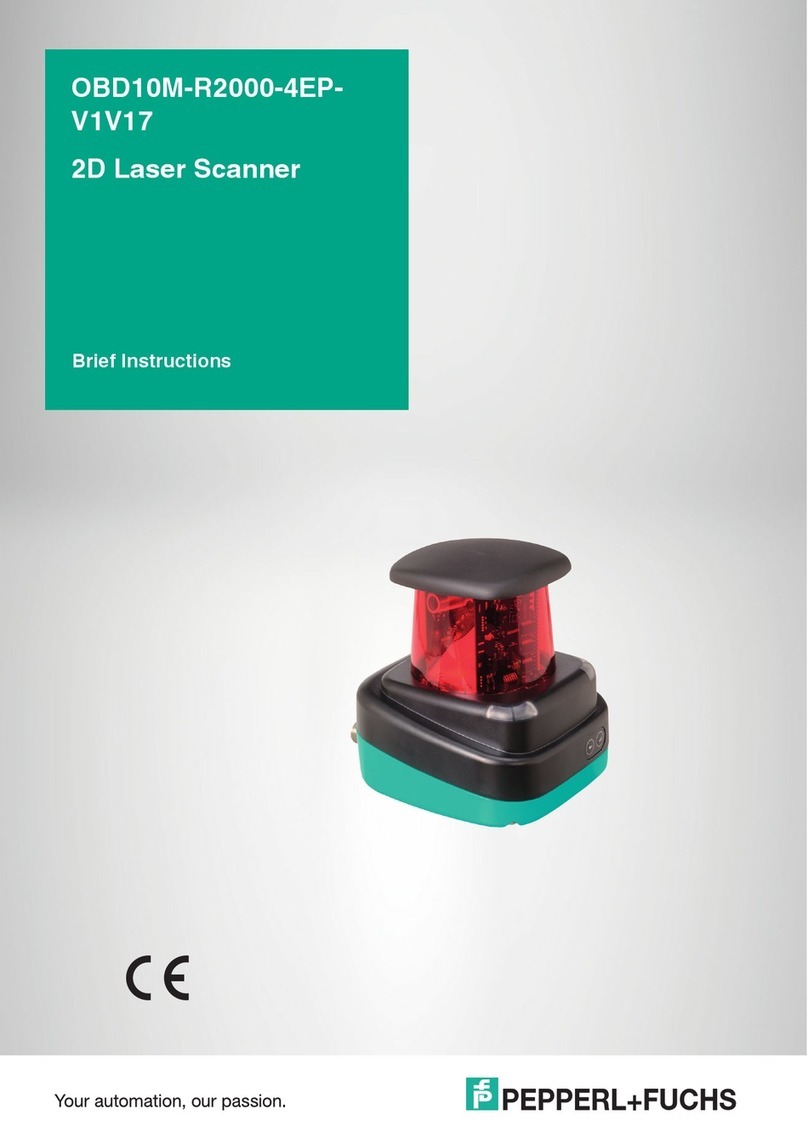
Pepperl+Fuchs
Pepperl+Fuchs OBD10M-R2000-4EPV1V17 Brief instructions
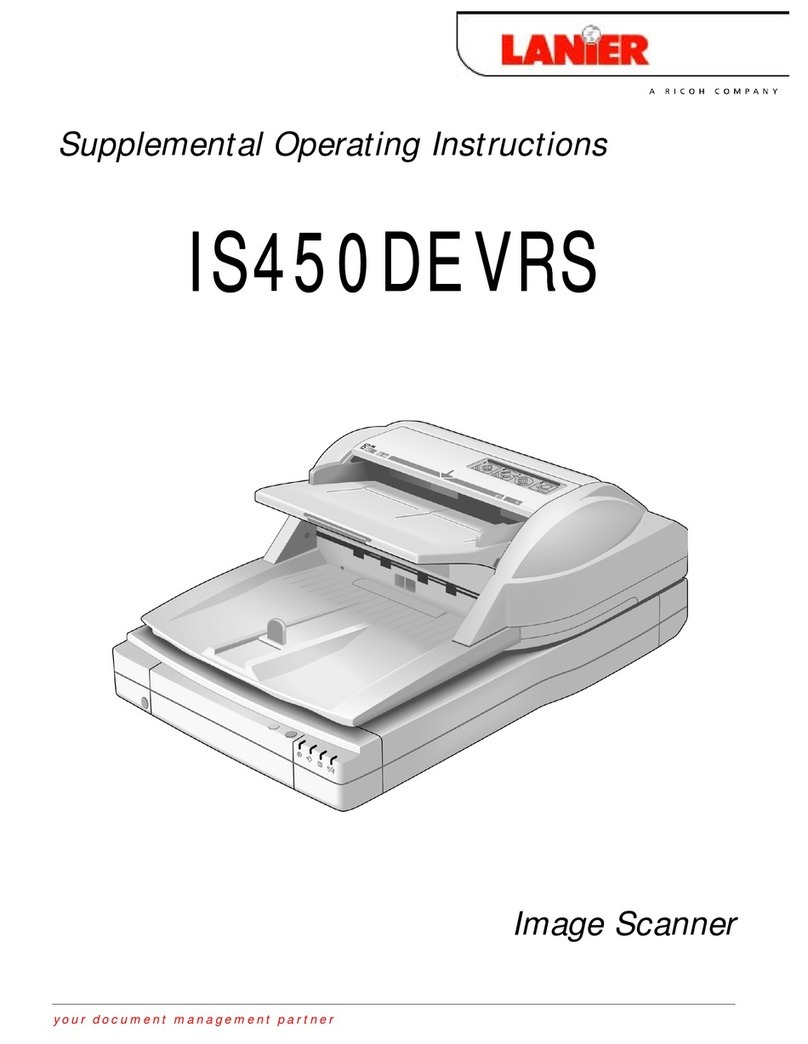
Lanier
Lanier IS450DE VRS Supplemental operating instructions

illumina
illumina iScan Quick reference card
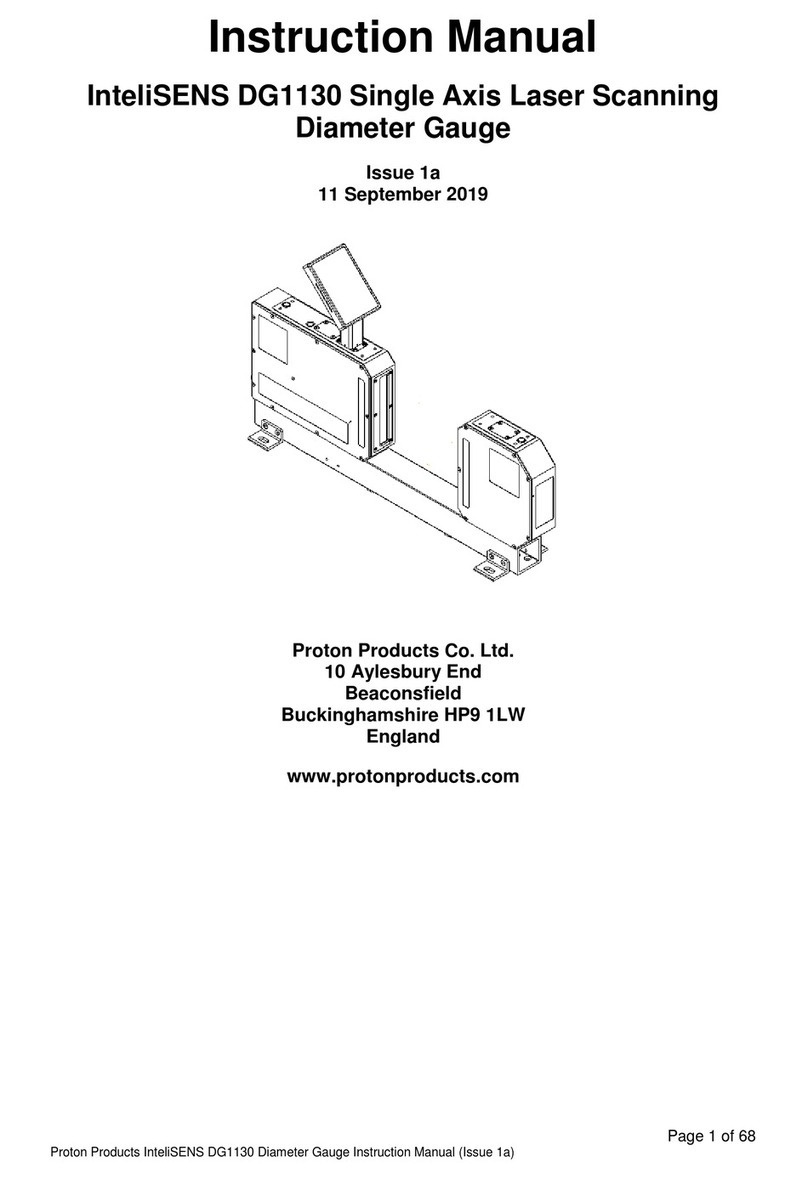
Proton
Proton InteliSENS DG1130 instruction manual

Humzor
Humzor NEXZDAS Series quick start guide

Plustek
Plustek OptiCard 821 Brochure & specs
